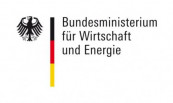Multi-HERO
About the Research Program
Multi-HERO: Multiphoton microscopy with high tissue penetration depth based on an innovative femtosecond fiber laser with dual output
Multiphoton imaging techniques have become of fundamental importance in biology, medicine, and neuroscience. In neuroscience, multiphoton microscopy has allowed imaging of neural activities in the brain of mice, allowing learning more about the complex brain behavior. For these investigations, the main multiphoton techniques used to be two-photon fluorescence imaging. However, in recent years three-photon imaging has become increasingly important for neuroscience, as it exhibits higher penetration depth into tissue enabling the imaging of deeper lying brain regions with cellular resolution through the use of longer excitation wavelength. However, for these investigations higher pulse energy levels are required compared to two-photon imaging techniques, implying complex and cost-intensive laser systems, such as optical parametric amplifiers (OPA).
The goal of the Multi-HERO project is to develop a compact, cost-efficient, turn-key fiber laser system tailored to the requirements in three-photon imaging in neuroscience. The project consortium aims to advance the field of three-photon imaging by making it widely available to researchers through lower laser system costs and turn-key, maintenance-free operation, allowing research to focus on the application rather the maintenance of the laser system. Moreover, the project will investigate non-degenerated two-photon excitation at longer wavelength allowing for a compromise between maximum penetration depth and required pulse energy of the laser system, thereby allowing to increase imaging speed and lowering potential damage to the sample.
We are grateful for funding provided by BMWi Germany.
